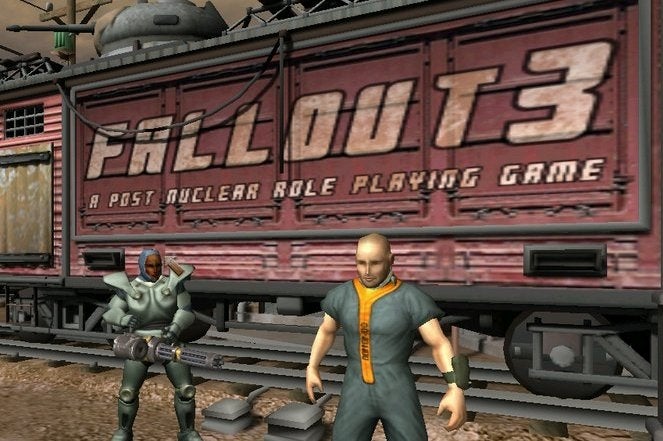
PC gamers of a certain vintage will remember tales of Project Van Buren, a title that early ’00s Interplay intended as the sequel to 1998’s hit Fallout 2. Now, original Fallout producer Timothy Cain is sharing some behind-the-scenes details about how he contributed to the project’s cancellation during a particularly difficult time for publisher Interplay.
Cain famously left Interplay during Fallout 2‘s development in the late ’90s to help form short-lived RPG house Troika Games. After his departure, though, he was still in touch with some people from his former employer, including an unnamed Interplay vice president looking for some outside opinions on the troubled Van Buren project.
“Would you mind coming over and playing one of my game prototypes?” Cain recalls this vice president asking him sometime in mid-2003. “We’re making a Fallout game and I’m going to have to cancel it. I don’t think they can get it done… but if you could come over and look at it and give me an estimate, that’s a chance I wouldn’t cancel it.”
Cain discusses his memories of testing “Project Van Buren.”
Cain recalls walking “across the street” from Troika to the Interplay offices, motivated to help because, as he remembers it, “if you don’t do it, bad things will happen to other people.” There, he got to see the latest build of Project Van Buren, running on the 3D Jefferson Engine that was intended to replace the sprite-based isometric view of the first two Fallout games. Cain said the version he played was similar or identical to a tech demo obtained by fan site No Mutants Allowed in 2007 and featured in a recent YouTube documentary about the failed project.
After playing for about two hours and talking to the team behind the project, Cain said the VP asked him directly how long the demo needed to become a shippable game. The answer Cain reportedly gave—18 months of standard development for “a really good game” or 12 months of “death march” crunch time for an unbalanced, buggy mess—was too long for the financially strapped publisher to devote to funding the project.
“He could not afford a development period of more than six months,” Cain said. “To me, that time frame was out of the question… He thought it couldn’t be done in six months; I just confirmed that.”
Show me the money
Looking back today, Cain said it’s hard to pinpoint a single “villain” responsible for Van Buren’s failure. Even reusing the engine from the first Fallout game—as the Fallout 2 team did for that title’s quick 12-month development process—wouldn’t have necessarily helped, Cain said. “Would that engine have been acceptable five years later [after Fallout 2]?” he asked rhetorically. “Had anyone really looked at it? I started the engine in 1994… it’s creaky.”
Real “Van Buren”-heads will enjoy this in-depth look at the game’s development, including details of Interplay’s troubled financial situation in the early ’00s.
In the end, Van Buren’s cancellation (and that of a planned Interplay Fallout MMO years later) simply “comes down to money,” Cain said. “I do not believe that [with] the money they had left, the game in the state it was in, and the people who were working on it could have completed it within six months,” he said. “And [if they did], I don’t think it would have been a game you would have liked playing.”
Luckily, the all-but-name shuttering of Interplay in the years after Van Buren’s cancellation wouldn’t spell the end of the Fallout series. Bethesda acquired the license in 2007, leading to a completely reimagined Fallout 3 that has become the cornerstone of a fan-favorite franchise many years later. But for those still wondering what’ Interplay’s original “Fallout 3” could have been, a group of fans is trying to rebuild the Project Van Buren demo from the ground up for modern audiences.




















+ There are no comments
Add yours